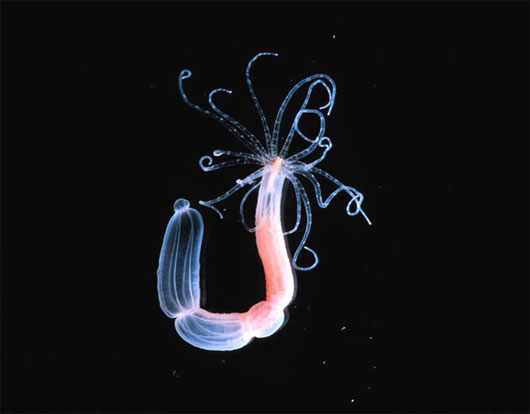'Half a tree, half a child' under the sea
Anemone is an extremely bizarre creature, half a plant, half animal, at least considering its genetic code.
The size of an organism's genome does not correspond to its simplicity or complexity. Therefore, some scientists hypothesize that more sophisticated networks and connections between genes make the organism's structure more complex.
Researcher Michaela Schwaiger of the University of Vienna (Austria) and colleagues analyzed the anemone's genome, not only to identify genes that encode proteins , but also to evaluate codes that help increase or decrease gene expression. . They found that the anemone's simple body hides a complex network of gene interactions, similar to that of higher-level animals such as fruit flies and humans.

Anemones have genetic characteristics that are both animal and plant-like.(Photo: Nature)
The discovery has dismissed the notion that more complex genetic connections are always similar to more complex body structures. It also shows that the evolution of this level of gene organization occurred about 600 million years ago, before the phase of separating anemones, fruit flies and humans.
The team also found that anemone has a second level of gene organization, similar to plants. The genes are copied by an RNA and this RNA is then used to make proteins. However, tiny fragments of genetic material called microARN , which bind tightly to RNA copies, can prevent protein synthesis.
Although plants and animals all possess microARNs, they have very different appearance and behavior. Therefore, the scientists concluded that they were independently initiated into two separate worlds. However, Schwaiger's team found that the anemones microARN share many similarities with both microARN in animals and plants.
That implies, anemone microARNs may have evolved before animals and plants separated from it long ago. They are also evidence of an evolutionary link between the microRNAs of animals and plants.
- The oldest tree in England has changed sex after 3,000 years
- Ancient trees have unique and strange shapes all over the world
- For the first time, an embryo has been successfully created, half a half pig
- Mysterious fir tree regenerates itself from the dead
- He deciphered the ash tree sequence
- Story about 'devil tree': Witness the massacre of 1 family and many other deaths
- In America there is an oak tree
- The first plant bloomed after 57 years
- The 10 most exotic plants on Earth
- The oldest 9550-year-old tree from the Ice Age
- Why is there a tradition of decorating and lighting up Christmas trees?
- Highest tree species - Almond Tree Eucalyptus amygdalina
 Surprised: Fish that live in the dark ocean still see colors
Surprised: Fish that live in the dark ocean still see colors Japan suddenly caught the creature that caused the earthquake in the legend
Japan suddenly caught the creature that caused the earthquake in the legend A series of gray whale carcasses washed ashore on California's coast
A series of gray whale carcasses washed ashore on California's coast Compare the size of shark species in the world
Compare the size of shark species in the world